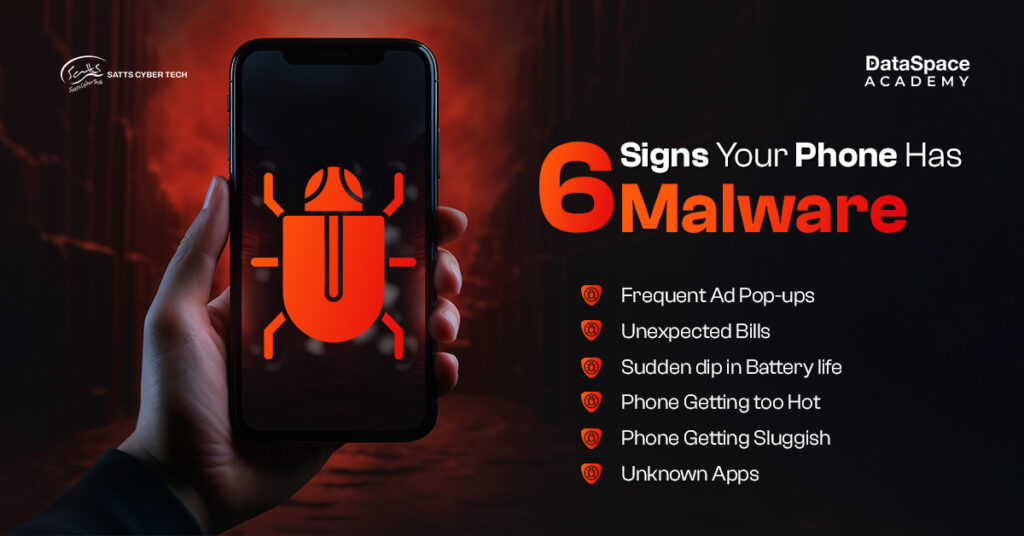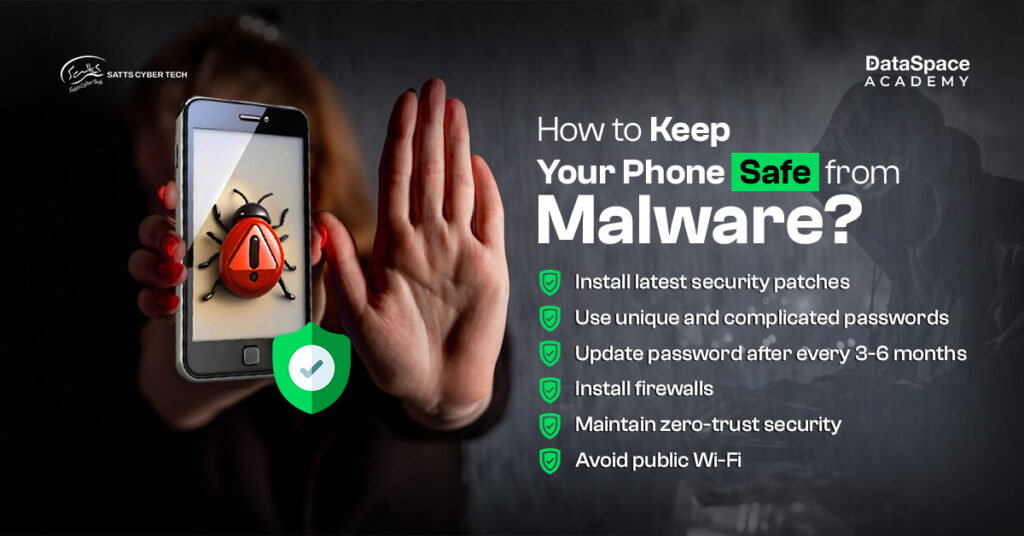How to Remove Malware from Phone? An Essential Guide
Last Updated : 20 Nov, 2024
 450
450

Introduction
Cyberattacks on mobile phones surged by 147% in 2023 compared to 2022. With 2025 approaching, the numbers are only rising.
Is your phone slowing down abnormally? Are you frequently experiencing call drops in your network? That’s probably because your phone might be infected with malware, secretly spying on your digital activities and transactions. Scary isn’t it?
Both iOS and Android mobiles are under the radar of attackers – however, research says that Android devices are 50 times more likely to be infected with malware than iOS devices.
So, how to remove malware from phone? Is it possible? Yes, it is. But, prevention should be your priority as the impact of malware attacks could be more than devastating.
This blog sheds light on the telltale signs of malware attacks on phones, their disastrous consequences, and also how to troubleshoot the problem.
Effects of malware attacks on phone
Cybercriminals are constantly evolving and developing shrewd techniques to access your phone with your permission (unbeknownst to you). Yes, you read that right! Most of the time it’s you who allow threat actors to gain unauthorised access to your phone by clicking unverified links sent via texts, WhatsApp messages, and emails – or simply by granting permission to cloned apps.
Some of the common mobile malware are RAT (Remote Access Trojans), spyware, adware, crypto mining malware, etc. Let’s explore how these illicitv emenets can adversely compromise your digital privacy through your phone.
- Personal data and credential theft: Mobile malware poses a serious risk to confidentiality by stealing personal data like contacts, messages, and passwords. Cybercriminals exploit this information for identity theft, fraud, and unauthorised access, causing long-term privacy and security issues.
- Financial risks: Online financial scams are increasing at an alarming rate and usually it’s because of users’ ignorance or unawareness. Most of the time, users fall prey to such scams by ignorantly downloading cloned apps that replicate legitimate apps. This is how cybercriminals violate your digital privacy to steal credentials like credit card details, contact numbers, and so on. Put simply, they take control of your phone and can even drain your bank accounts and wallets.
- Organisational risks: Using your compromised phones in an organisational network can lead to serious consequences like data breaches, loss of customer data, and more. The entire operation cycle might get disrupted, and worse, the organisation might have to suffer mammoth financial loss and irreversible reputation damage.
Signs to Detect Malware in Android & iPhone

So here we present some proven symptoms to detect malware in Android and iPhone before it’s too late:
- Frequent Popping of pop-up ads:
If you notice an unusual number of pop-up ads within an app or/and on home screen, your device might have been infected with adware. This is one of the most common signs to detect during a malware scan Android. These intrusive ads are designed to generate revenue through clicks, lead you to scammy offers, or even expose you to more dangerous malware. Stay cautious and avoid blind clicking. - Unexpected Billing:
Go through your phone or credit card bills line by line. Scan for unauthorised services tacked onto your phone bill. If there’s something you can’t explain, it might be a cramming scam. Sadly, there have been cases where carriers didn’t address this properly, leaving the responsibility on you to identify and report fraudulent fees. - Sudden Dip in Battery Life:
If your phone’s battery starts dying quicker than usual without any major changes – it might be because of malware running in the background or overusing your device’s components. - Phone too Hot to Handle:
If your phone feels hotter than usual, it could be a sign of trouble, possibly caused by malware like Loapi. This type of software can overwork your phone’s CPU and charging components, leading to serious overheating issues. To stay safe, unplug it, turn it off, and let it cool down. A hot phone isn’t just uncomfortable, it can also be dangerous. - Phone Acting Sluggish:
When a device gets infected with malware, it can push its hardware to the limit, leading to longer load times and frequent freezes. While some issues have been linked to playful pranks like text strings or wallpaper glitches, a sudden drop in speed might point to a deeper security issue. - Unknown Apps Popping:
Every now and then, downloaded apps may bring along malware that installs additional software. It’s a good idea to scan your app list and verify that everything is as expected. If anything seems odd, don’t launch it.
How to remove malware from phone – Android & iPhone
If you are experiencing some or all of the above-mentioned symptoms in your phone, and wondering how to prevent malware, here is your guide:
Android troubleshooting tips:
- Troubleshoot Android safely: Hold Power, long-press Power Off, and disable third-party apps. Resolve any unusual behaviour.
- Malware scan android: When unsure, invest in an antivirus from a trusted provider to scan your Android device for malware.
- Reset Your Device: If other options fail, perform a factory reset to clear malware and restore your device to its original state.
iOS troubleshooting tips:
- Check if your phone is jailbroken. Jailbroken is a type of exploit used to compromise manufacturer’s restrictions.
- To confirm, check>General>VPN & Device management
- Remove suspicious apps by pressing and holding the app icon to select Remove App and confirm by tapping Delete App.
- Update your Apple phone with the latest patch
- Go to Settings> General> Software
- Update to install the latest version
- Clear iPhone’s browsing history
- Go to Settings> Safari> Clear history & website data.
Tips to prevent malware attacks

Prevention is always better than cure. It’s high time to keep your phone protected from malware with the following tips:
- Enhance your phone’s security layers with the best security practices. Create strong and unique passwords, use a password manager, and update with the latest patches.
- Secure your network from the endpoint level all the way to email and DNS. Deploy a comprehensive security framework with next-gen endpoint monitoring, firewalls, and intrusion prevention systems.
- Limit the impact of a security breach by isolating parts of your network through segmentation.
- Deploy a zero-trust security approach to minimise risks by verifying every user, device, and connection continuously.
- Avoid public Wi-Fi as these are the favourite playgrounds of hackers.
- Last but not least, educate yourself, peers, and employees on the latest cyber threats, their nature, and prevention tips.
Conclusion
With malware attacks on phones on the rise, there is an increasing demand for skilled penetration testers or cybersecurity experts. If you are aspiring to be a cybersecurity, enroll in our industry-leading penetration testing course for beginners. The course includes theoretical and practical training to help you develop hands-on pentesting skills to prevent malware attacks.
 450
450




































































































